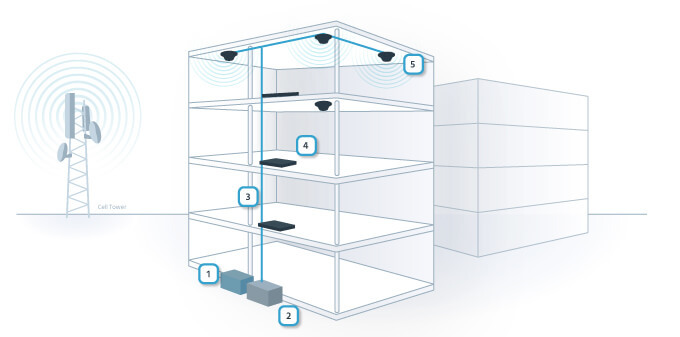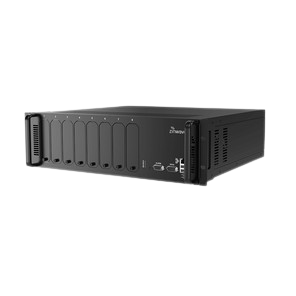The Best Solutions for Bad Cell Service in Hospitals
Whether your healthcare institution has already adopted or is considering cellular technology to further improve patient care and enhance productivity, there is one common challenge that most healthcare institutions face: bad cell service.
In this post, we discuss why it’s important to have a reliable cellular connection inside hospitals and healthcare facilities, as well as how cell phone signal boosters can help improve cellular connectivity for the healthcare industry.
We fix poor cell phone signal! Find the right signal booster for you:




Why Hospitals Struggle with Cell Service
Unreliable cell reception in hospitals is most often the result of building materials and location.
Most healthcare facilities are built with steel, concrete, brick, and energy-efficient windows, which attenuate and block incoming cellular signals. Complex layouts further limit in-building coverage, causing spotty service in corridors and dead zones in offices. When far from cell towers or in areas with rugged terrain, a reliable connection indoors becomes almost impossible for doctors, nurses, specialists, EMTs, patients, and visitors.
Real-World Example: St. Luke’s Wood River Medical Center in Idaho
Despite having 3-4 bars of service outside, a nearby mountain and the hospital’s construction materials combined blocked out most of the signal indoors, leaving staff and visitors with little to no coverage.
Benefits of Reliable Cell Signal in Healthcare
Reliable cellular connectivity inside hospitals isn’t a luxury, it’s essential for modern healthcare operations, patient safety, and care quality. Here’s why:
- More Reliable Connectivity: Hospitals often rely on pagers, VoIP phones, and WiFi networks, each with limitations. Pagers don’t support two-way communication, WiFi networks slow down during heavy use, and VoIP depends on steady connectivity — otherwise, calls drop and messages fail. As facilities move away from outdated systems, strong in-building cellular coverage ensures seamless, two-way communication for staff without overloading existing WiFi infrastructure.
- Improved Care Quality: Poor communication leads to delays, medical errors, and longer patient stays. Reports state that up to 80% of serious medical errors result from miscommunication during patient handoffs. Reliable cell service improves real-time, two-way contact between doctors, nurses, and specialists throughout the facility, enabling faster consultations, access to mobile EHR apps, and instant sharing of patient data and test results.
- Enhanced Patient Experience: A strong cell signal also benefits patients and visitors. It keeps families connected, lets patients research health information, and provides access to language translation apps when staff interpreters aren’t available. For patients isolated during treatments or procedures, it offers a vital link to loved ones through calls, texts, and video chats.
- Supports IoT & Telehealth Connectivity: Modern hospitals increasingly rely on connected medical devices and telehealth services. A reliable cellular network supports mobile telemedicine sessions, remote monitoring devices, and critical IoT applications without adding pressure to WiFi networks already strained by 24/7 data demands. With physicians using mobile devices for everything from EHR access to virtual consults, consistent cellular coverage helps keep operations efficient and responsive.
Top Solutions to Improve Cellular Coverage Inside Hospitals
Poor cellular coverage in hospitals can lead to dropped calls, slow messaging, and communication delays between medical staff. The most effective way to resolve this is by installing a Distributed Antenna System (DAS) — a network of strategically placed antennas that improve signal strength throughout a facility. There are three main types of DAS to consider: Active, Hybrid, and Passive DAS.
Active DAS

Active DAS connects directly to a carrier’s core network (like Verizon, AT&T, or T-Mobile), converting radio signals into digital via fiber optic or Ethernet cables for reliable, wall-to-wall coverage. It’s ideal for large, high-traffic hospitals and medical centers.
Key Benefits:
- Direct carrier connection for maximum signal strength
- Supports longer cable runs and large coverage areas
- Excellent for facilities with no outdoor signal
Considerations:
It’s the most expensive DAS option, costing $5–$10 per sq. ft., and can take months or years to deploy due to complex installations and carrier approval requirements

Versatile, carrier-agnostic solution designed for hospitals of all sizes. Supports 5G, 4G LTE, public safety, and other private radio networks.
Learn MorePassive DAS
Passive DAS, also known as a cell phone signal booster, captures existing outdoor signals and amplifies them inside via antennas, amplifiers, and coaxial cables. It doesn’t require a direct carrier connection or lengthy approvals, making it a faster, more affordable option — typically $0.50–$1 per sq. ft. Installation can be completed in weeks rather than months.
Key Benefits:
- Most budget-friendly and customizable
- Ideal for hospitals with a decent or weak outdoor signal
- Can deliver key area or wall-to-wall coverage

Most powerful multi-carrier signal booster for medium to large healthcare facilities, offering up to 100,000 sq. ft. of coverage, remote monitoring, and multi-carrier support. Channelization tech maximizes signal strength and quality in any signal environment.
Learn MoreHybrid DAS
Hybrid DAS blends the performance of Active DAS with the simplicity and affordability of Passive DAS. It uses fiber or Ethernet to distribute signal from centralized equipment but relies on off-air signal or small cell connections, reducing installation time. No carrier permission needed.
Key Benefits:- More affordable and flexible than Active DAS
- Faster deployment times
- Suitable for medium to large healthcare facilities

Scalable, cost-effective, and easily tailored solution to your hospital’s coverage needs.
Learn MoreReal Results for Healthcare
Our team has helped businesses across many different industries overcome poor in-building cellular coverage. Here’s one example of many:
PrecisionCare Surgery Center – East Setauket, NY
PrecisionCare Surgery Center, Long Island’s premier outpatient orthopedic surgery destination, struggled with virtually no cellular signal within its 15,000 sq. ft. facility. Surgeons and patients alike were frequently forced to rely on other healthcare providers due to the unreliable service.
After a detailed assessment, our team recommended and deployed two WilsonPro Enterprise 1300 signal amplifiers. In just three business days, the entire system was installed, delivering a strong, consistent cell signal across the surgery center and restoring seamless communication for staff, surgeons, and patients.
Why Reliable Cellular Coverage Matters for Healthcare and How We Can Help
Reliable cellular connectivity inside hospitals and healthcare facilities isn’t just about convenience. It directly impacts communication between staff, emergency services, and patient families. With scalable solutions like Active DAS, Hybrid DAS, and Passive DAS, facilities can eliminate dead zones, improve patient satisfaction, and enhance operational efficiency.
Here’s what sets us apart:
- 10,000+ systems installed since 2011
- FCC-certified, hospital-safe equipment
- Full-service installation and project management
- HIPAA-aware designs that avoid interference with medical equipment
- Remote monitoring and ongoing support available
Not sure which system fits your needs?
Contact us today at 1-800-887-1961 or schedule a free consultation. Our team will assess your building, current signal strength, and coverage priorities, and recommend a practical, budget-conscious solution.
Frequently Asked Questions
What’s the best solution for cellular dead zones in healthcare facilities?
How much do hospital signal booster systems cost?
What is the best signal-boosting solution for hospitals and clinics?
Interested in Learning More? Check Out Our Signal Boosting Info Center


Money Back Guarantee

Technical Support